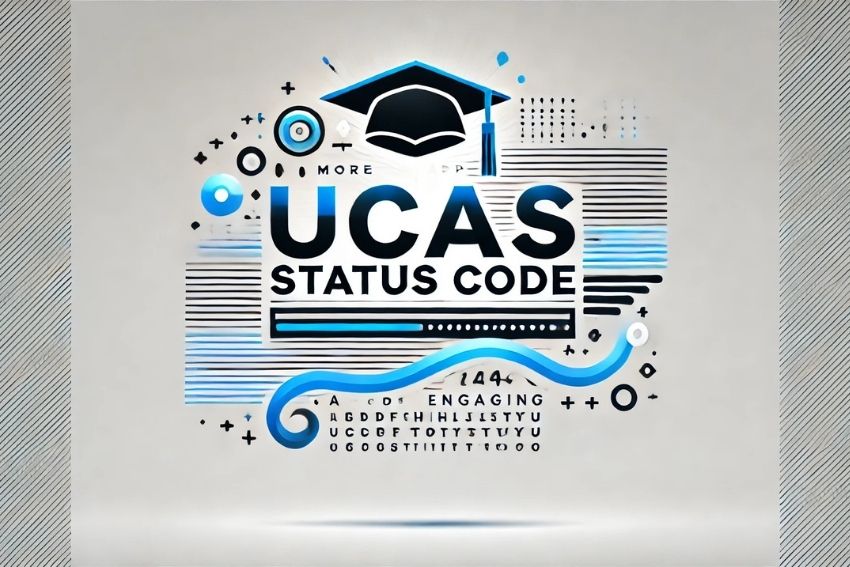Good note-taking can make revision feel easier and less stressful. It helps you remember the main points and stay organised as exams get closer. But here’s the thing: many students take notes that don’t actually help them. You might be working hard, but if your notes aren’t clear or useful, it can slow you down later.
That’s why we’ve put together this guide. In this blog, you’ll find 15 common note-taking mistakes that students often make and simple ways to avoid them. If you’re a student, you’ll learn how to take smarter notes. And if you’re a parent, you’ll get tips to support your child through exam season. For more on how revision habits shape learning, check out BBC Bitesize.
Mistake 1: Writing Everything Word for Word
Many students think writing down everything a teacher says or copying full paragraphs from a textbook will help. It feels productive at the time. But actually, this kind of note-taking can slow you down later when you’re revising.
When you write things word-for-word, you’re not really processing the meaning. You’re just copying. That means you’re less likely to remember the content and more likely to stare blankly at your notes later. Also, full sentences take longer to write. You might miss something important while you’re still writing the last point.
What should you do instead? Try to write in your own words. When you rephrase ideas, your brain has to understand them first and that helps you remember. You can also: use short bullet points, write simple phrases instead of full sentences, leave out extra words that don’t add meaning and highlight or underline main terms after.

Mistake 2: Not Organising Your Notes
Even if you write great notes, they won’t help much if you can’t find what you need later. A big mistake students make is keeping everything jumbled, different subjects on the same page, no titles, no clear layout.
When notes are messy or disorganised, revision becomes more frustrating. You might waste time looking for the right topic or get confused trying to follow your own writing.
So, what’s the fix? Start by keeping each subject in its own folder or notebook. You can also divide topics with headings or coloured sticky notes. This helps your brain know what’s coming and makes everything easier to review.
Some students like using systems like the Cornell Method. It splits the page into sections one for keywords, one for notes, and one for quick summaries. It’s simple and tidy. Another great habit is to date your notes. That way, if you’re reviewing a specific lesson, you’ll know exactly where to look.
And parents, if your child’s notes are all over the place, help them set up a simple system. Organisation doesn’t need to be perfect, just consistent.
Mistake 3: Never Reviewing What You Wrote
Taking notes is a great start, but if you never look at them again, they won’t help much. A lot of students write notes and then leave them untouched until exam week. That’s a mistake. If you don’t review your notes, it’s easy to forget what you learned. Worse, you might waste time relearning things later because nothing stuck the first time.
Here’s what to do instead: review your notes regularly, not just before a test. Even spending ten minutes looking over what you wrote that day can make a big difference. Try this simple routine:
- Read your notes the same evening after class
- Highlight or underline important points
- Write a quick summary at the bottom of the page
- Go back and review your notes at the end of the week
This habit helps move information from short-term memory into long-term memory and that’s the goal. If you’re a parent, you can help by asking your child what they covered in lessons that day. Talking about their notes out loud reinforces what they’ve learned. It doesn’t take hours. A little review often goes a long way.
Mistake 4: Highlighting Too Much
Highlighters can be useful, but only if you use them wisely. A common mistake is highlighting nearly everything on the page. If everything is important, then nothing really stands out. Many students highlight entire paragraphs just to feel like they’re studying. But this doesn’t help your brain remember important points. In fact, it can make it harder to find what actually matters when you revise. So, how should you use highlighters?
Only highlight the most important terms or phrases, no more than one or two lines at a time. Think of it like giving clues to your future self. What would you want to spot quickly when revising later?
It also helps to highlight in stages. First, read your notes. Then go back and highlight the key bits. This way, you know you’re marking what really matters, not just colouring in.
Mistake 5: Avoiding Diagrams or Visuals
Some students think note-taking means just writing, lots and lots of writing. But that’s not always the best way to learn. If your notes are only words, they can quickly become hard to follow or even boring to read. This makes revision tougher and less effective.
You may want to know why visuals help? Diagrams, charts, and mind maps all help your brain see connections between ideas. That makes it easier to understand and remember things. For example, a mind map is great for topics with lots of subpoints. A labelled diagram might help with science or geography. Even a quick sketch can help fix something in your memory.
You can try to turn lists into flowcharts, use arrows to show how things link and add colour to group ideas together. Sometimes, a simple picture explains more than a whole paragraph.

Mistake 6: Using the Wrong Method for You
Not every note-taking method works for every student and that’s completely fine. One common mistake is copying how someone else takes notes, even if it doesn’t suit your learning style.
You might see a friend using colour-coded flashcards or detailed summaries and feel you have to do the same. But if that method doesn’t help you understand the topic, it won’t work.
So, what should you do? Try out different styles and see what feels natural. Some students prefer mind maps. Others do better with bullet points or quick voice notes. There’s no one “best” method; the best one is the one that helps you remember. Think about how you learn best:
- Do you remember things better when you write them down?
- Do pictures or diagrams help?
- Do you prefer reading aloud or listening to explanations?
If you’re a parent, encourage your child to experiment. Let them try different formats and see what sticks. You’ll soon spot what keeps them focused and what just wastes time. Finding the right note taking method can make revision feel easier and much less frustrating.
Mistake 7: Not Summarising After Lessons
A lot of students take notes and then forget about them. That’s a missed opportunity. When you don’t summarise after a lesson, you’re more likely to forget what you just learned. Your notes might sit in a folder, untouched, until exam time. By then, the topic might feel completely new again.
So, what’s the solution? You can take five minutes after class to quickly go over your notes. Ask yourself: What was today’s main idea? or what are the three key things I need to remember?
Then write a short summary at the bottom of the page, just a few lines in your own words. This small habit makes a big difference. It helps you understand the topic better and makes revision easier later. You can even explain the topic out loud to someone at home. Parents, this is a great time to ask, “What did you learn today?” Talking it through helps lock it into memory. It doesn’t have to be perfect. A quick recap is enough to make the lesson stick.
Mistake 8: Only Typing or Only Writing
Some students only type their notes. Others always write by hand. Sticking to just one method might seem easier but it’s not always the most effective. Typing is fast and neat. It’s great for getting lots of information down quickly. But it’s easy to zone out and type without really thinking.
Writing by hand slows you down, which can actually be a good thing. It gives your brain more time to process what you’re learning. But it can also be harder to keep up in fast-paced lessons. If you want to find the best way to do this, you should mix it up.
You could type your notes during class and then write short summaries by hand afterwards. Or write in lessons and type them up later to review. Changing how you write helps you engage with the material in different ways. Different tasks work better in different formats and variety can keep revision interesting too.
Mistake 9: Leaving No Space to Add Info
It’s easy to think you’re done once you’ve filled a page with notes. But if you don’t leave space to add more later, you might struggle when it’s time to revise. A common mistake is squeezing everything into one go. Then later, when you learn something new or spot a mistake, there’s no room to fix or add anything.
You may already know what to do: leave space between sections of your notes. You can skip lines, add wide margins, or use the back of the page for updates. Some students even use sticky notes to add extra points. That extra space gives you breathing room. You can add reminders, quick tips, or follow-up questions after class or during revision.
Mistake 10: Spending Too Much Time Making It Look Neat
Neat notes can feel satisfying but if you spend ages making your notes look “perfect,” you’re wasting precious revision time. Some students rewrite pages again and again, just to fix the handwriting or colour code every line. It might look great, but it doesn’t always help you learn.
In fact, spending too much time on appearance can take your focus away from what really matters, the content. So, what should you do? Focus on clarity, not perfection. Your notes should be tidy enough to read, but they don’t need to look like a textbook. Use simple headings, short bullet points, and the occasional highlight. That’s enough to keep things organised and helpful.

Mistake 11: Not Using Shortcuts or Symbols
Some students try to write full sentences for everything. While it might seem like a good idea, it can slow you down and make your notes harder to review quickly. You don’t need to write every word. In fact, using shortcuts and symbols can save time and help you take notes faster, especially during fast lessons.
Here’s what you can try:
- Use arrows (→) instead of writing “leads to”
- Write “w/” for “with” or “b/c” for “because”
- Create your own codes for common words or subjects
These little tricks let you focus on the meaning instead of just writing. Plus, they make your notes easier to skim when revising later. If you’re a parent, encourage your child to make up a few simple symbols or abbreviations. They don’t need to be fancy, just something they’ll remember. The goal is to make note-taking quicker and revision easier. Shortcuts help you do both.
Mistake 12: Skipping Hard Topics
Let’s be honest, it’s tempting to skip over the topics that feel confusing or difficult. But avoiding them won’t make them go away. Many students focus on subjects they already understand. It feels easier and more rewarding. But skipping the hard parts can leave gaps in your knowledge that show up in the exam.
You can go through the hard topics early. For example, you can break topic into smaller parts and focus on one bit at a time. Use your notes to write down questions or areas that need more help. Then, go back and fill in those gaps as you learn more or ask a teacher, tutor, or even a friend to explain. Avoiding hard topics might feel easier now, but facing them will help you feel more confident later.
Mistake 13: Not Linking Notes to Textbooks
Sometimes students take notes in class, but don’t connect them with their textbooks. That can lead to confusion when it’s time to revise. Your notes might miss key examples, definitions, or explanations that are already in the textbook. And if you revise from notes alone, you might not get the full picture.
So, for that use your textbook as a support. After each lesson, check your notes against the textbook. Add page numbers, extra details, or diagrams that help explain the topic better. This way, when you go back to revise, you’ll have both your notes and the full explanation in one place. You could even use two colours one for your class notes, and another for anything added from the book.
Mistake 14: Only Copying from Slides
It’s easy to copy everything from a teacher’s slides and think your note taking is done. But copying slides word for word doesn’t mean you’ve understood the topic. Slides are often short summaries or bullet points. They’re meant to guide the lesson, not replace it. If you only copy what’s on the board, you’ll miss the extra explanations, examples, and context your teacher gives.
What should you do instead? Use the slides as a starting point. Then, add your own notes in between. Write down things your teacher says that aren’t on the slide. Note down examples, definitions, or anything that helps you understand better. Even adding a few extra sentences in your own words can make a big difference when revising later.

Mistake 15: Reading Notes but Not Testing Yourself
Reading your notes over and over might feel like revision but it’s not always the most effective way to learn. A common mistake is just reading through pages of notes without testing what you actually remember. It feels productive, but your brain isn’t working as hard as it should.
To fix that, use your notes to quiz yourself. Cover part of the page and try to recall what’s underneath. Or write down questions based on your notes and answer them later. You could even explain a topic out loud without looking, just to see what sticks. Another great tip is to turn headings into questions.
Testing yourself helps you find what you don’t know and that’s the best way to get stronger before exams.
Conclusion
Note-taking might seem like a small part of revision, but it has a big impact. As we’ve seen, avoiding common note taking mistakes can make your study time less stressful. Whether you’re a student working through difficult subjects or a parent helping your child stay on track, improving how notes are taken can lead to better understanding and better results.
If something still isn’t clicking, that’s okay. Sometimes, a bit of outside help makes all the difference. Online tutoring is a great way to get support, especially when it comes to revising and building better habits. So, take a moment to review your current notes. Try a few of the tips in this guide. Small changes now can lead to big progress later and help you feel much more confident when exam day arrives.
You Might Be Interested In
Revision Motivation: Top 7 Tips Every Student Should Know
Top 10 Websites for GCSE Revision: Unlock Your Full Potential








